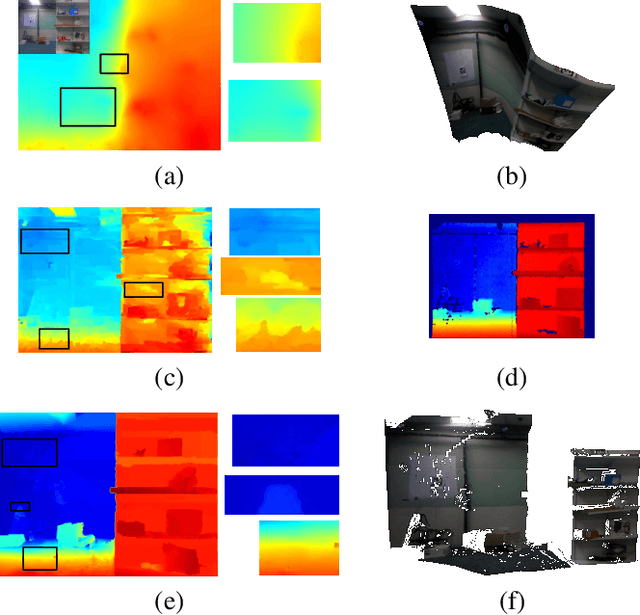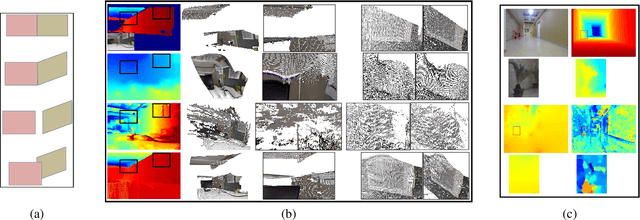Indoor dense depth map at drone hovering
Paper and Code
Apr 25, 2019



Autonomous Micro Aerial Vehicles (MAVs) gained tremendous attention in recent years. Autonomous flight in indoor requires a dense depth map for navigable space detection which is the fundamental component for autonomous navigation. In this paper, we address the problem of reconstructing dense depth while a drone is hovering (small camera motion) in indoor scenes using already estimated cameras and sparse point cloud obtained from a vSLAM. We start by segmenting the scene based on sudden depth variation using sparse 3D points and introduce a patch-based local plane fitting via energy minimization which combines photometric consistency and co-planarity with neighbouring patches. The method also combines a plane sweep technique for image segments having almost no sparse point for initialization. Experiments show, the proposed method produces better depth for indoor in artificial lighting condition, low-textured environment compared to earlier literature in small motion.
 Add to Chrome
Add to Chrome Add to Firefox
Add to Firefox Add to Edge
Add to Edge